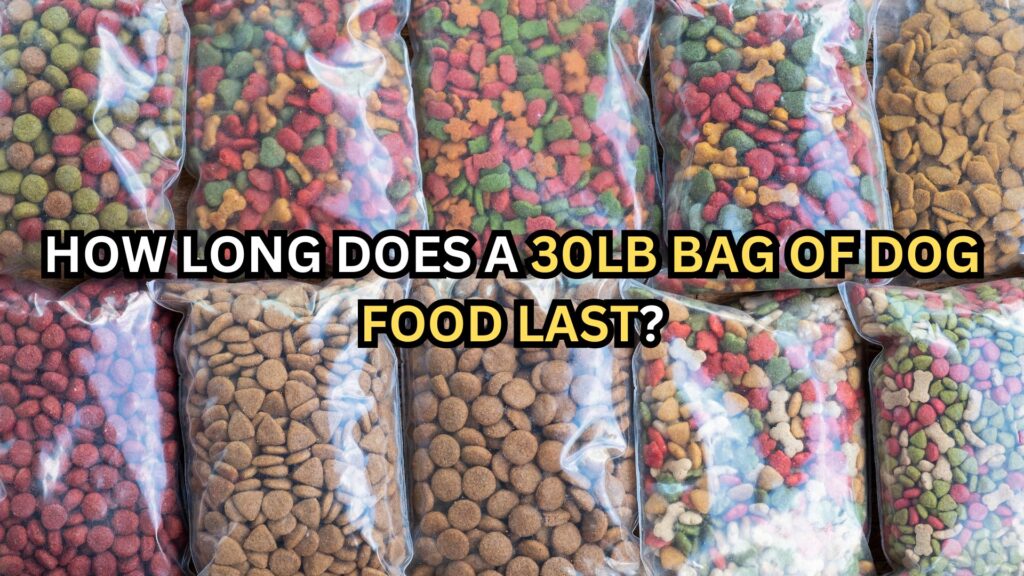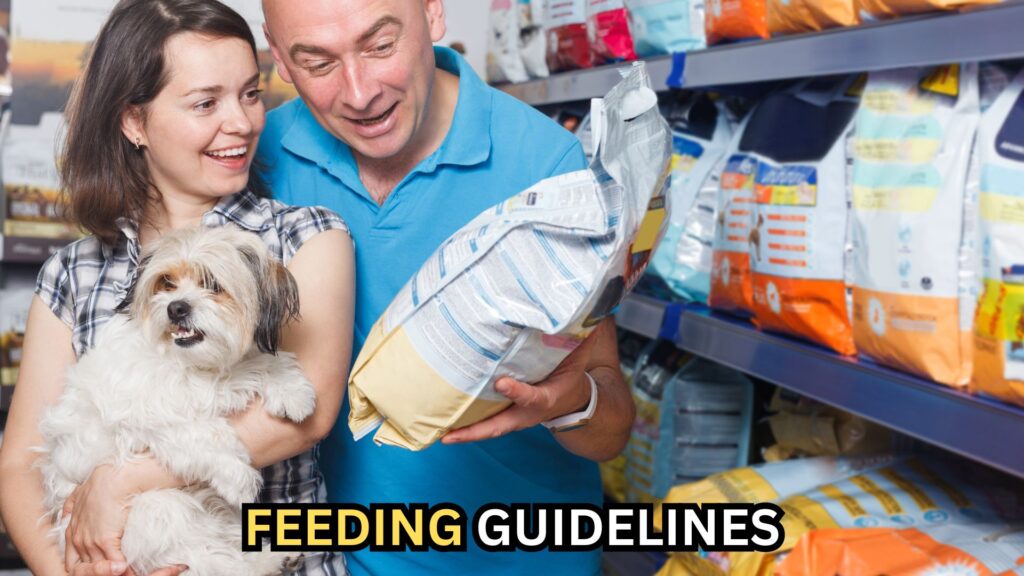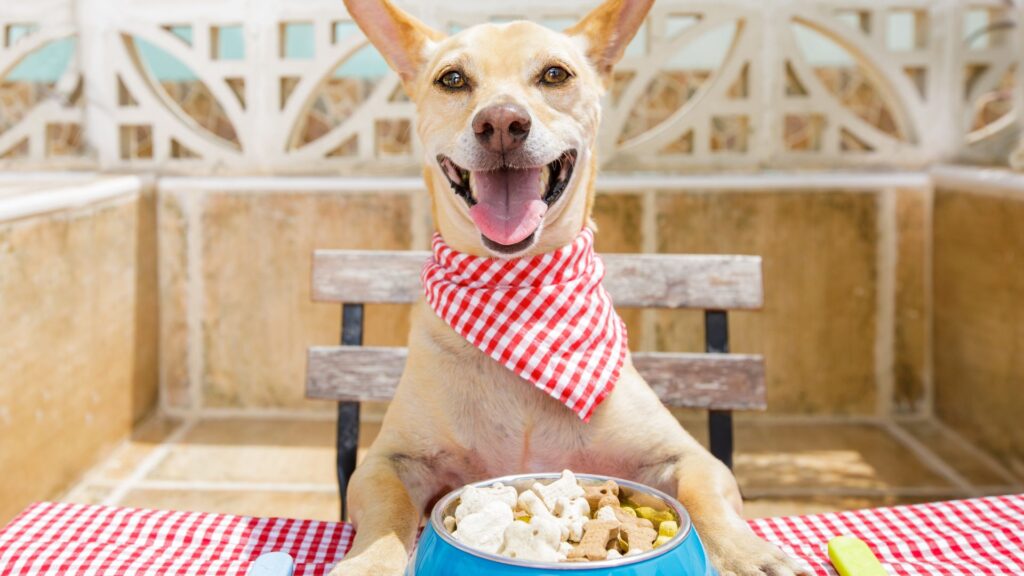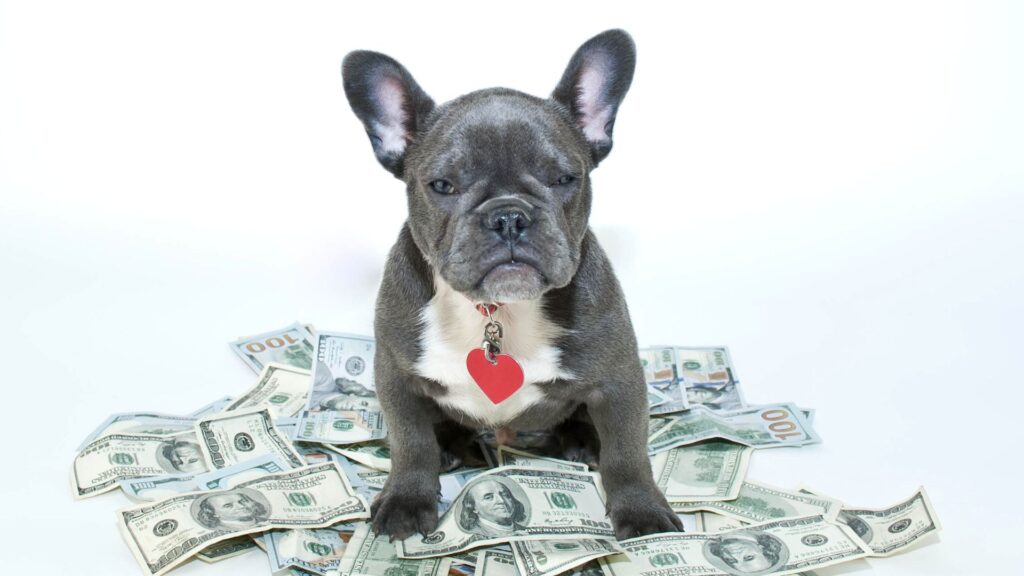Introduction
Every dog owner has faced the perplexing question at some point: “How long will a 30LB bag of dog food last for my furry friend?” It’s a dilemma that goes beyond mere curiosity, touching on the essential aspects of budgeting, nutrition, and overall pet care.
The answer is not as straightforward as one might hope, largely because it hinges on a variety of factors that differ from one dog to another. These include the dog’s size, age, activity level, and even the specific brand and type of food you’re using.

Understanding these elements is crucial not just for financial planning, but more importantly, for maintaining the health and happiness of your canine companion.
Let’s dive into how these factors play a role in determining the longevity of a dog food bag, ensuring you’re equipped with all the information needed to make the best decisions for your pet.
Understanding Dog Food Bag Longevity
Dog Size and Weight
The size and weight of your dog are perhaps the most significant determinants of how much food they need. Larger breeds with more body mass require more calories to maintain their energy levels and overall health, which means a 30LB bag of dog food will deplete faster in a household with a Great Dane compared to one with a Shih Tzu.
As a general guideline, dogs weighing under 10 pounds might consume around ¼ to ¾ cup of food per day, while those in the 50 to 70-pound range might need 2 to 2½ cups daily. However, these are very rough estimates, and the specific needs can vary based on the food’s calorie content.
Age and Activity Level
A dog’s life stage and activity level also significantly impact their dietary needs. Puppies, for instance, are in a rapid growth phase and generally require more calories per pound of body weight than adult dogs.
Senior dogs, on the other hand, may have slower metabolisms and potentially less physical activity, reducing their caloric requirements.
Active dogs, such as those who regularly accompany their owners on runs or engage in agility training, will burn more calories and therefore go through a bag of dog food quicker than their sedentary counterparts.
Type of Dog Food
The variety of dog food plays a critical role in how long a bag lasts. Different brands and types of dog food come with their own recommended serving sizes, primarily due to variations in nutritional content.
For instance, grain-free or high-protein diets are often more nutrient-dense, allowing you to feed your dog less volume to meet their dietary needs compared to conventional dog food.
This means a 30LB bag of premium, high-protein dog food might last longer than a bag of standard dog food, even if both are serving the same size dog.
Feeding Guidelines and Calculations
Calculating the longevity of a 30LB dog food bag requires a bit of math, taking into account the factors mentioned above. Most dog food brands provide feeding guidelines based on weight, but it’s essential to adjust these recommendations based on your dog’s specific needs.

For a rough estimate, first determine your dog’s daily serving size based on the brand’s recommendations. Then, divide the total weight of the bag (in this case, 30 pounds or approximately 13.6 kilograms) by the daily serving size in pounds or kilograms. This will give you an approximate number of days the bag will last.
For example, if you’re feeding your 50-pound dog 2 cups of food per day, and there are approximately 4 cups in a pound of dog food (this varies by brand and type, so check the bag), a 30LB bag contains roughly 120 cups of food. Therefore, the bag should last about 60 days.
Keep in mind, this is a simplified calculation and adjustments may be needed for your dog’s unique circumstances.
By understanding these key factors and performing a little bit of calculation, dog owners can better estimate how long a 30LB bag of dog food will sustain their pet, ensuring they’re neither overbuying nor running out unexpectedly.
This not only aids in effective budget management but also supports the ongoing health and well-being of the dog.
Practical Tips for Dog Food Management
Measuring Servings Correctly
One of the most straightforward yet overlooked aspects of dog food management is measuring servings correctly. Precision in feeding not only prevents overfeeding and underfeeding but also ensures that your 30LB bag of dog food is used efficiently.

Use a standard measuring cup for dog food servings and adhere to the feeding guide provided by the food manufacturer. Adjust the amount based on your dog’s activity level, age, and weight changes. For accuracy, consider using a kitchen scale for dry food, especially if your dog is on a strict diet.
Storing Dog Food
Proper storage of dog food is vital in maintaining its freshness and extending its shelf life. Exposure to air, moisture, and high temperatures can degrade the quality of the food. Store the dog food in its original bag within an airtight container, and keep it in a cool, dry place.
The original bag is designed to preserve freshness, and keeping it sealed in an additional container will help prevent air and pests from getting in. Avoid storing dog food in humid areas like basements or bathrooms, as moisture can lead to mold.
Monitoring Your Dog’s Health
Observing your dog’s health is crucial when managing their diet. Changes in weight, energy level, and coat condition can be indicators that dietary adjustments are needed.
Regular vet check-ups are essential for a comprehensive understanding of your dog’s health needs. If you notice any sudden changes in your dog’s appetite or digestion, consult your veterinarian to determine whether a dietary change is necessary.
Cost-Effectiveness and Budget Planning
Budgeting for Dog Food
Planning your dog food expenses requires understanding how long a bag lasts and the cost per serving. This can help you budget effectively and avoid unexpected expenses. Track how long a bag of dog food lasts for your pet and calculate the monthly cost based on this duration.
Look for discounts, loyalty programs, or coupons offered by retailers and manufacturers to save on costs without compromising on quality.

Buying in Bulk vs. Smaller Quantities
While buying in bulk can offer cost savings, it’s important to consider your dog’s eating habits and the storage space available.
Large bags are more cost-effective per serving, but only if you can store the food properly to maintain its freshness. If your storage options are limited, or if your dog prefers variety in their diet, smaller bags might be more practical despite the higher cost per serving.
Conclusion
Understanding how long a 30LB bag of dog food lasts is about more than just numbers; it’s about ensuring your dog’s health, happiness, and well-being through proper nutrition and care. The factors influencing the consumption rate of dog food vary widely among dogs, underscoring the importance of personalization in feeding practices.
As you navigate the responsibilities of dog ownership, remember to adjust feeding amounts based on your dog’s unique needs and activity levels. Proper storage and regular health monitoring play crucial roles in maintaining the quality of your dog’s diet.
Finally, thoughtful budgeting and purchasing strategies can make a significant difference in managing pet care expenses effectively.
We encourage our readers to share their experiences and tips on managing dog food usage and expenses in the comments section. Your insights could be invaluable to fellow dog owners striving to provide the best care for their pets.
Remember, consulting with a veterinarian can provide personalized advice tailored to your dog’s specific dietary needs and health status.
Frequently Asked Questions (FAQs)
How can I tell if I’m feeding my dog the right amount of food?
Determining if you’re feeding your dog the right amount involves monitoring their overall health and body condition. A dog fed an appropriate amount of food should have a visible waist and you should be able to feel (but not see) their ribs without a thick layer of fat.
Changes in weight, energy levels, and the condition of their coat can also indicate whether their diet needs adjustment.
Regular check-ups with your veterinarian can help ensure you’re on the right track, as they can provide professional advice tailored to your dog’s specific health needs.
What do I do if my dog is gaining or losing weight on their current diet?
If your dog is gaining or losing weight unexpectedly, the first step is to consult with a veterinarian to rule out any underlying health issues. If their weight change is diet-related, your vet may recommend adjusting the portion size or switching to a different type of food.
For overweight dogs, reducing portion sizes and increasing exercise gradually can help, while underweight dogs may need more nutrient-dense food or more frequent feedings.
How often should I buy dog food to ensure it’s fresh?
The frequency of purchasing dog food depends on the size of the bag you’re buying and your dog’s daily consumption rate. Ideally, you want to buy enough to last approximately one month to ensure freshness.
This timeframe can help prevent the food from becoming stale or spoiled and minimize the risk of nutrient degradation.
Always check the expiration date when purchasing dog food and try to finish the bag before this date.
Can the type of dog food I choose really affect how long a bag lasts?
Yes, the type of dog food you choose can significantly affect how long a bag lasts. Higher-quality, nutrient-dense foods often require smaller serving sizes to meet your dog’s nutritional needs compared to lower-quality options.
This means a bag of premium dog food might last longer than a bag of economy brand food, even if both bags weigh the same.
Always consider the feeding guidelines provided by the manufacturer, as these are formulated to give you the best estimate of how long the food should last based on your dog’s size and dietary needs.
Are there any tools or apps to help me manage my dog’s diet and food consumption?
Several tools and apps are available to help dog owners manage their pet’s diet and food consumption more effectively. These include:
- Pet Nutrition Apps: Apps like Petnet, PetDiets, and Chewy offer features to track your dog’s food intake, calculate optimal feeding amounts based on their health profile, and even remind you when it’s time to buy more food.
- Digital Scales: Using a digital kitchen scale to measure your dog’s food portions can ensure accuracy, especially for small breeds or dogs on a strict diet.
- Online Calorie Calculators: Websites like Ollie Dog Food USA provide tools to help estimate your dog’s caloric needs based on their weight, activity level, and age.
Utilizing these resources can make managing your dog’s diet simpler and more precise, contributing to their overall health and well-being.


